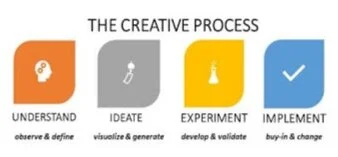Leadership has been defined and dissected in more ways than we can probably number and from a variety of authoritative sources from which I draw my inspiration - Covey, Collins, Sinek, Kouzes & Posner, to name a few. Each of these leadership gurus has helped me identify, refine and grow my leadership philosophy over the years.
None of their musings, mantras and models mean much, however, unless they are matched against the lived experience of an individual leader. To become truly useful and powerful, the lessons these authors try to impart must also be applied in the real world. As leaders, we must put the various theories to the practical test in our own unique environments. We must see what could work for us - or not - and then evaluate to what degree our level of success in implementation was the result of quality and intensity of effort, true understanding of the model and principles being applied, or some combination thereof. Tools on their own are not the answer. Tools on their own are not going to turn us into better leaders. What is required is critical and concerted application and adaptation of that tool to our environment and skill level.
This is where I believe a key - and underappreciated - aspect of leadership comes into play. The skill or tool of creativity.
I believe one of the least understood qualities of good and even great leaders is their ability to be creative. This goes beyond being entrepreneurial or innovative in relation to getting new products or services to market. In my view, creativity in leadership is characterized by a spirit of curiosity, a motivation for making impactful change, for trying something different, and even a commitment to exploration with all the attendant risk that comes from trying something new. Creativity in leadership means challenging oneself and the teams that are being led. Creativity results in conceiving of and realizing dreams never thought possible before. Creativity does in fact lead to exponential changes or quantum leaps in thinking and being.
What makes for a creative leader? What provides the context for creativity for a leader and thus for their teams and organizations to build, advance and succeed (perhaps out of all proportion to their perceived limitations)? I believe there are a few key factors to consider:
Ability to Defer Judgment: A rush to judgment precludes understanding of the true or real challenges or opportunities before a leader and their team and constrains perspective on possible new opportunities, options and avenues of exploration.
Passion to Seek Out Novelty: While deferring judgment opens up the mind, the novelty principle requires a leader to actively seek out and explore options that are original, unique and out-of-the-box. You might even note that such a leader is voracious and compelled to seek out insights from all kinds of sectors and sources.
Drive for Quantity: This quality, building on the previous two, suggests that the quantity of ideas explored is an ally of the quality of ideas ultimately achieved. Creative leaders always seem to have a variety of ideas in their heads. In fact, it can even be exhausting keeping up with their restless energy and stream of thought! In this case though, quantity is intended to leverage the probability of generating several good options.
Make/Seek Connections and Applications: Creative leaders recognize that limiting their field of view to their particular industry or sector is woefully insufficient in terms of pushing the envelope. This is also where the drive for novelty and quantity come into play. Creative leaders look for ideas and synergies from a variety of related and (seemingly) unrelated experiences, sectors, fields of study, stories, and genres.
Practical: One of the key aspects of useful creativity is the ability to implement something of impact or effect. The ability to translate creative ideas into practical application is one of the key elements that separates the dreamer from the effective leader.
As I noted earlier, creativity in leadership is not simply about introducing new products or services to market. One of the hallmark distinctions between leadership and management, or between being a leader and a doer, is getting things done (bigger things done) through others. In the context of leadership, therefore, and in the tremendously dynamic and ever-changing reality that is today's modern economy and workforce, leadership also demands creative approaches, adaptability and flexibility in responding to and achieving the potential of one's teams. How does a leader create and apply a creative process to building the capacity and capability of their teams?
In the context of leadership, therefore, the elements noted above (and likely more) need to brought to bear on leveraging the skills and abilities of a team or organization. Moreover, the leader has to have the vision and be actively scanning the environment to understand the challenges or opportunities available to the team. Next, the leader has to build a level of awareness on the part of the team as to the importance of these challenges or opportunities and why achievement of success is so critical. Then the team has to be engaged in an experimentation phase - brainstorming, piloting, trial balloons - that start to put ideas to the test. And finally, and most critically, something has to be implemented. Engaging the team throughout the creative process allows for definitive buy-in and adaptation as environmental circumstances dictate.
Leadership is an art. You are the conductor, the sculptor, the artist or perhaps even the chef. You are the creative inspiration and shaper of your team to something beyond what any one of you could achieve. Commit to your creative aspirations for your leadership and to the benefit of your team.
———————————————————————————————————
Greg Hadubiak, MHSA, FACHE, CEC, PCC
President & Founder - BreakPoint Solutions
gregh@breakpoint.solutions
www.breakpoint.solutions
780-250-2543



